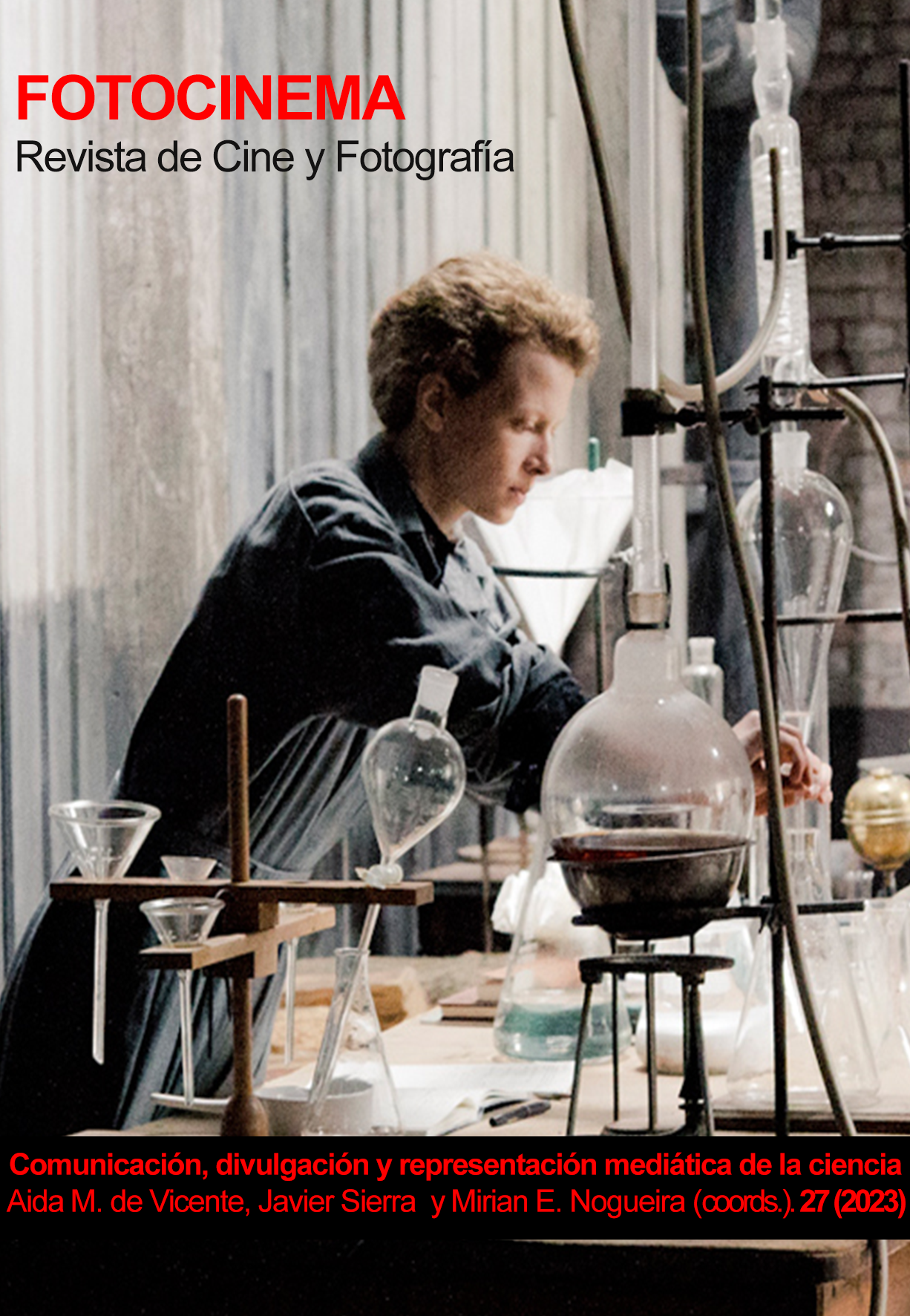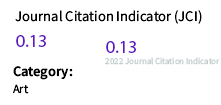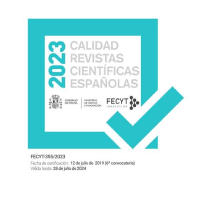The pact of veridiction in the biopic Isabel
visual narrative reconstruction based on History of the Moorish Kings of Granada by Hernando de Baeza
DOI:
https://doi.org/10.24310/Fotocinema.2023.vi27.15546Keywords:
Isabella I of Castile, filmic reality, reconstruction, history, veridiction, Hernando de BaezaAbstract
The Spanish state has been built on a series of historical milestones, at least two of which occurred during the reign of Isabella I of Castile between 1451 and 1504: the conquest of the Nasrid kingdom of Granada and the discovery of America, both in 1492. This reign, of which there is still abundant legal literature of the period, as well as all kinds of written materials, has already been portrayed in literature and, to a lesser extent, recreated in film. This paper seeks to analyse and contrast the RTVE biopic Isabel (2012-2014) and historical works: specifically, we will address the problematic relationship between reality and visual reconstruction of Hernando de Baeza's Historia de los Reyes Moros de Granada, whose work has never been formally acknowledged to be based on the series. To do so, we use a descriptive-argumentative logic and a narrative analysis with a mixed methodology. Among the conclusions, we highlight that the narrative structure is the bearer of imperial ideology, with deliberately false or erroneous aspects, which seek to strengthen a collective national imaginary about the goodness of the reign and which seek a certain spectacularisation from the visual point of view, moving away from the plausible.
Downloads
Metrics
References
Baeza, H. de (1863). Cosas de Granada. En M. J. Müller (Ed.), Die Letzten Zeiten von Granada (pp. 58-95). Christian Kaiser.
Barrientos-Bueno, M. (2013). La convergencia y la segunda pantalla tele- visivas en el caso de Isabel. En Actas del I Congreso Internacional Comunicacio?n y Sociedad. Logron?o: UNIR. Recuperado de http://reunir.unir.net/handle/123456789/1731
Barkay, R. (1984). Cristianos y musulmanes en la Espan?a medieval (El enemigo en elespejo). Rialp.
Barthes, R. (1992). Lo obvio y lo obtuso: imágenes, gestos, voces. Paido?s
Berger, J. (1997). Otra manera de contar. Mestizo
Blanco Pérez, M. (2020). Este?tica y contexto de los audiovisuales sobre narcotra?fico en Latinoame?rica en la era Netflix. Confluenze, Vol. XII (1). https://doi.org/10.6092/issn.2036- 0967/11334
Blanco Pérez, M. y Balleta, E. (2022). La guerra civil espan?ola en el cine como fuente historiogra?fica: la Andaluci?a del filme La Trinchera Infinita (2019) y la reconstruccio?n digital de un fascismo invisible. Tempo e Argumento, v. 13 (34). http://dx.doi.org/10.5965/2175180313342021e0204
Blanco Pérez, M. y Cruz González, M. C. (2022). El pacto de veridiccio?n en la serie Chernobyl. La verdad y la mentira histo?rica desde lo fi?lmico. Revista de Comunicacio?n, Núm. 21(1). https://doi.org/10.26441/RC21.1-2022-A2
Blanco Pérez, M. y Parejo, N. (2021). Historias de la fotografía en el s. XXI. Comunicación Social.
Camporesi, V. (2014). Pensar la historia del cine. Cátedra.
Casetti, F. y Di Chio, F. (1991). Co?mo analizar un filme. Planeta.
Coelho, I. y Sossai, F. C. (2016). Aproximac?o?es entre histo?ria pu?blica e histo?ria oral: o caso do Laborato?rio de Histo?ria Oral da Univille. Revista Tempo e Argumento, v. 8 (19). https://doi.org/10.5965/2175180308192016096
Debord, G. (1999 [1967]). La sociedad del espectáculo. Pre-Textos.
Delgado Pérez, M. M. (2017). A Newly Discovered Manuscript of the Historia de los Reyes Moros de Granada by Hernando de Baeza. Manuscript Studies. A Journal of the Schoenberg Institute for Manuscript Studies, 2 (2), 540-567.
Delgado Pérez, M. M. (2018a). Diego Fernández de Córdoba, segundo conde de Cabra, como Pentapolín. Ecos de un relato de Hernando de Baeza en el Ingenioso hidalgo cervantino. En D. Murcia y F. Toro (Coords.) Los Fernández de Córdoba. Nobleza, hegemonía y fama (pp. 105-114) Ayuntamiento de Alcalá la Real.
Delgado Pérez, M. M. (2018b). Certezas e hipótesis sobre el final de la crónica granadina de Hernando de Baeza. Anaquel de Estudios Árabes e Islámicos, 29, 33-62. https://doi.org/10.5209/ANQE.58723
Genette, G. (1989). Palimpsestos. La literatura en segundo grado. Taurus.
Longhi Heredia, S. A. y Forteza Martínez, M. A. (2021). Cuando la historia y el patrimonio invaden la pantalla. Diálogo con Javier Olivares. Fotocinema, Revista Científica de Cine y Fotografía, (22). https://doi.org/10.24310/Fotocinema.2021.vi22.11779
Martín Corrales, E. (2002). El moro al inmigrante y del inmigrante al moro: entre la maurofobia y la maurofilia en Espan?a en las tres u?ltimas de?cadas (1975-2003). Anuario de filología, XXIV (12).
Marzal, J. (2007). Cómo se lee la fotografía. Cátedra.
Rincón, W. (2004). Los Reyes Católicos en la pintura española del siglo XIX. Arbor, 178 (701), 129-161. https://doi.org/10.3989/arbor.2004.i701.584
Marfil-Carmona, R. (2018). Historia de España y series de televisio?n. Posibilidades dida?cticas de ‘Isabel’, ‘Carlos, rey emperador’ y ‘El ministerio del tiempo’. En Marfil-Carmona, Osuna-Acedo y González Aldea: Innovación y esfuerzo investigador en la Educación Mediática contemporánea. Egregius.
Preston, P. (2019). Un pueblo traicionado. Debate.
Salvador Esteban, L. (2016). Historia y ficción televisiva. La representación del pasado en Isabel. Index Comunicacio?n, no. 6 (2).
Suárez Fernández, L. (1989). Los Reyes Católicos. El tiempo de la guerra de Granada. Rialp.
Vallín, P. (2021). C3PO en la corte del rey Felipe. Arpa.
Downloads
Published
How to Cite
Issue
Section
License
All contents published in Fotocinema Revista científica de cine y fotografía are protected under the Creative Commons Attribution-NonCommercial-ShareAlike 4.0 International (CC BY-NC-SA 4.0) license. All about this license is available in the following link: <http://creativecommons.org/licenses/by-nc-sa/4.0>
Users can copy, use, redistribute, share and exhibit publicly as long as:
- The original source and authorship of the material are cited (Journal, Publisher and URL of the work).
- It is not used for comercial purposes.
- The existence of the license and its especifications are mentioned.
There are two sets of authors’ rights: moral and property rights. Moral rights are perpetual prerogatives, unrenounceable, not-transferable, unalienable, imprescriptible and inembargable. According to authors’ rights legislation, Fotocinema. Revista científica de cine y fotografía recognizes and respects authors moral rights, as well as the ownership of property rights, which will be transferred to University of Malaga in open access. The property rights are referred to the benefits that are gained by the use or the dissemination of works. Fotocinema. Revista científica de cine y fotografía is published in an open access form and it is exclusively licenced by any means for doing or authorising distribution, dissemination, reproduction, , adaptation, translation or arrangement of works.
Authors are responsable for obtaining the necessary permission to use copyrighted images.










.png)

13.png)




